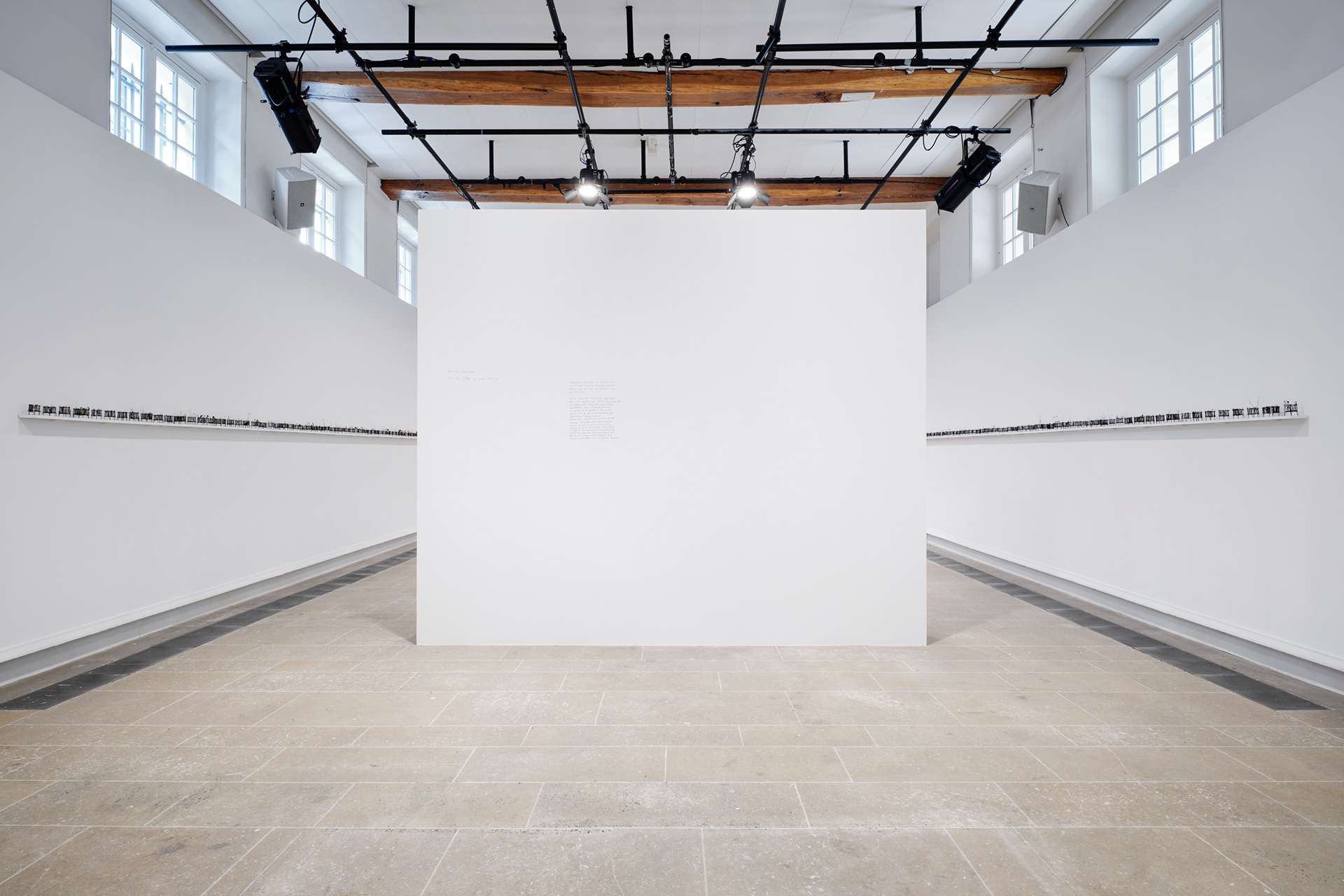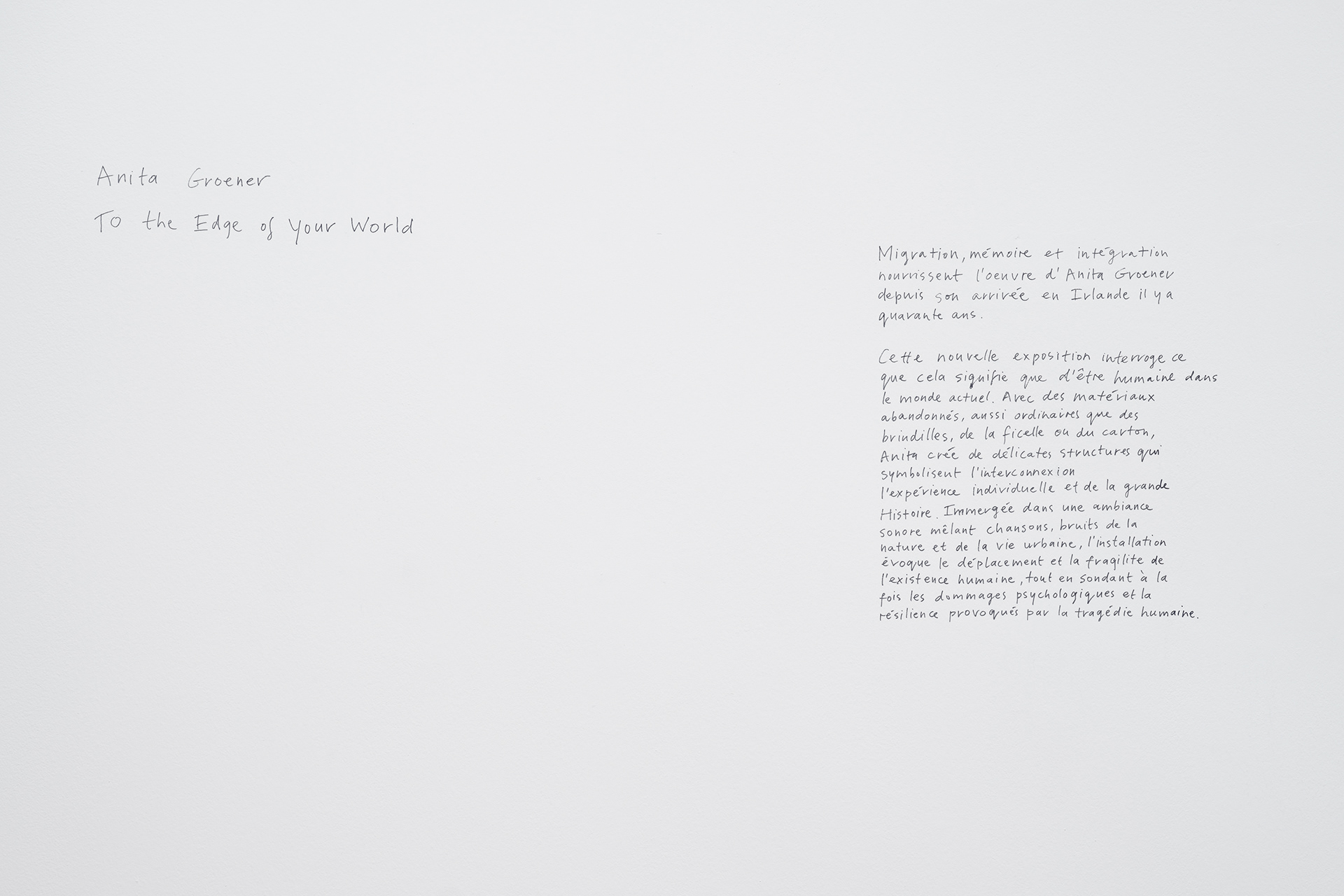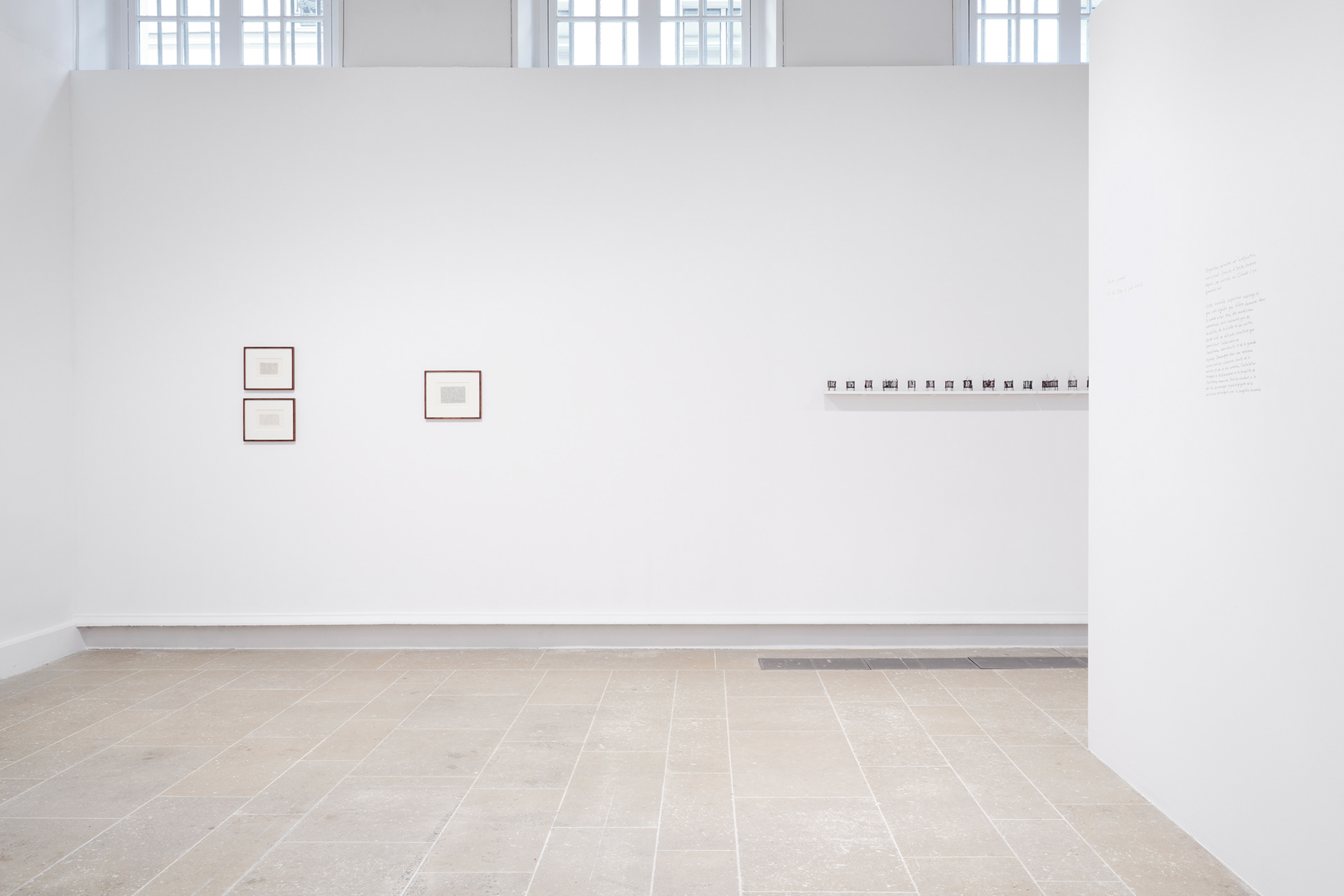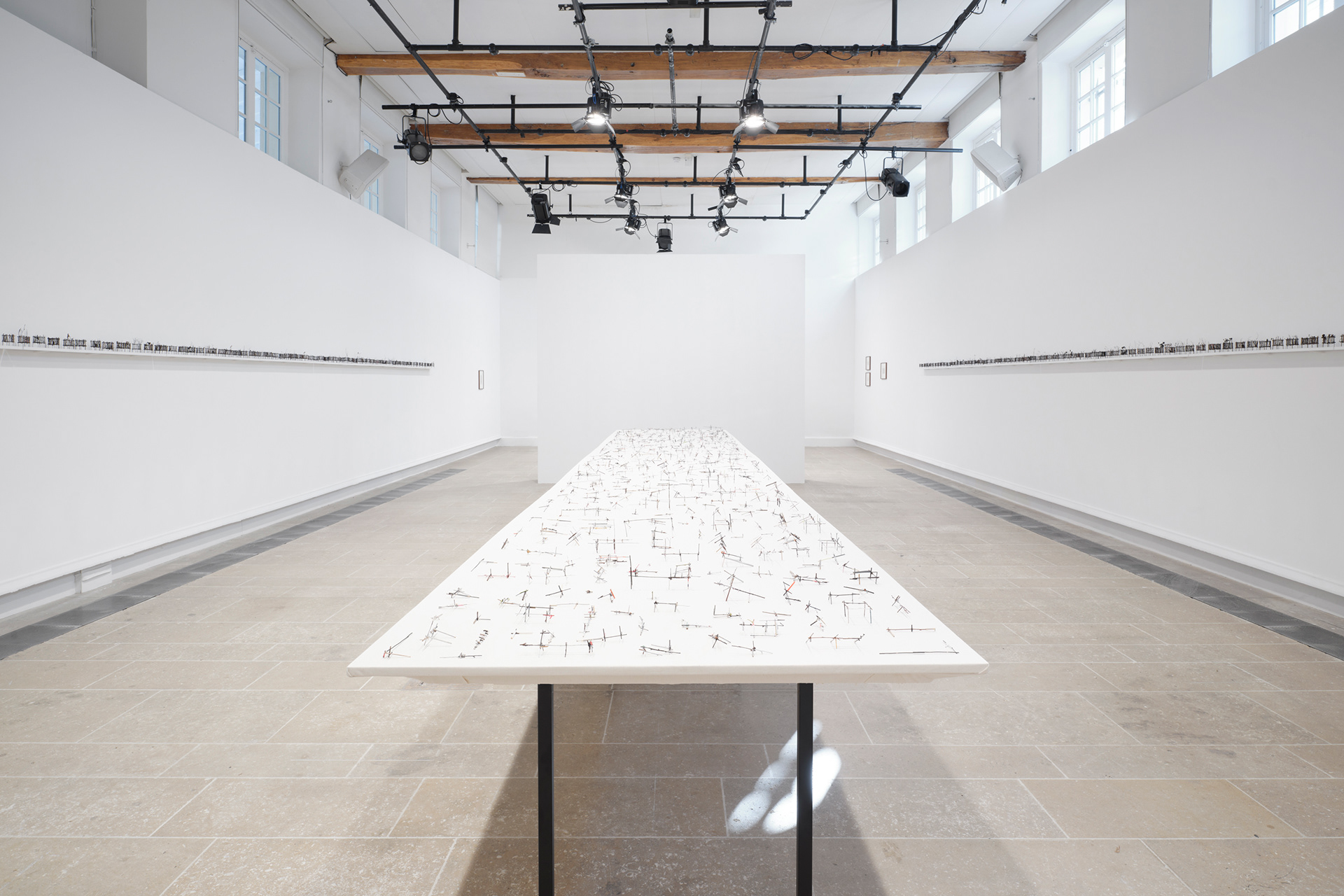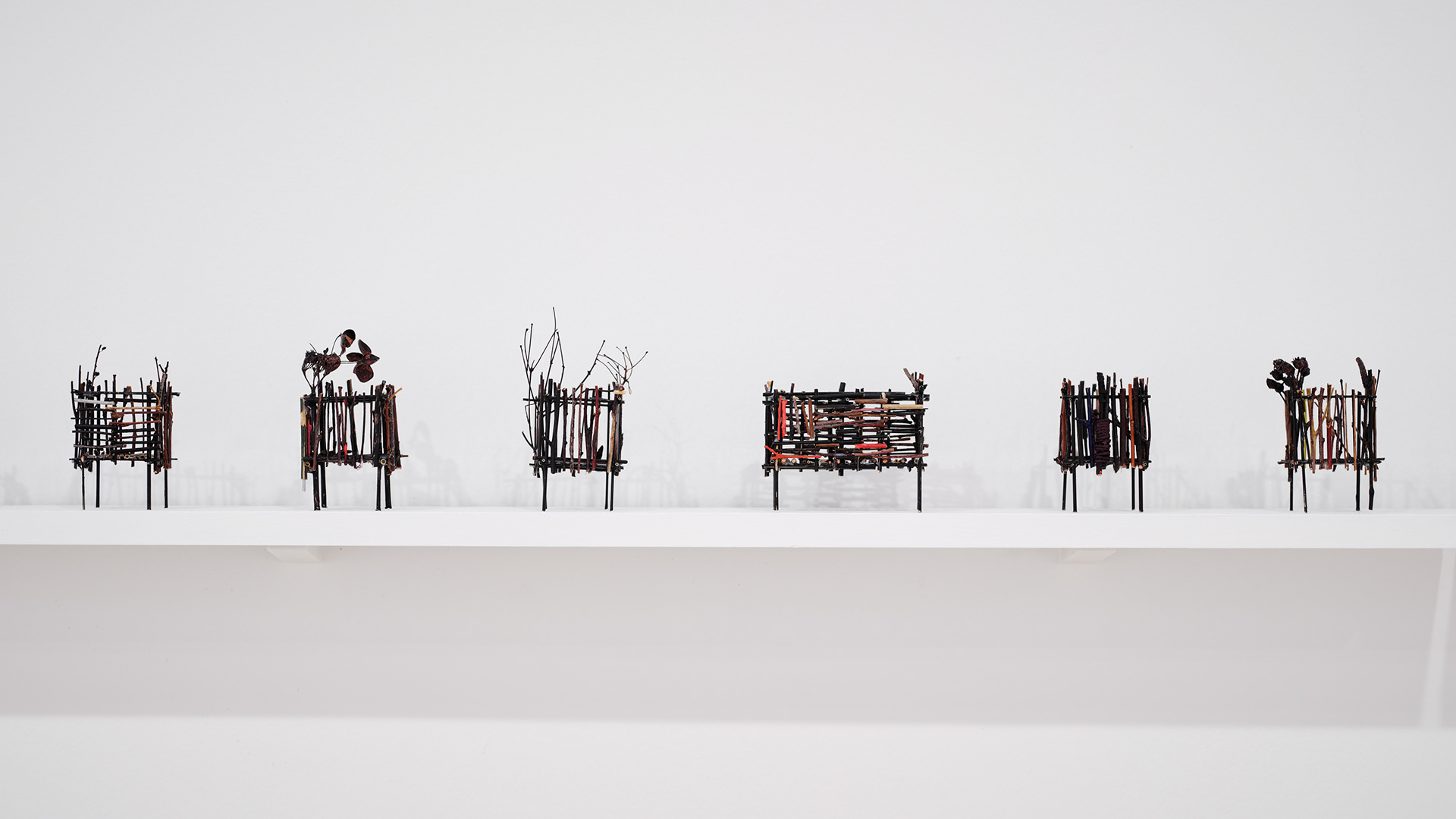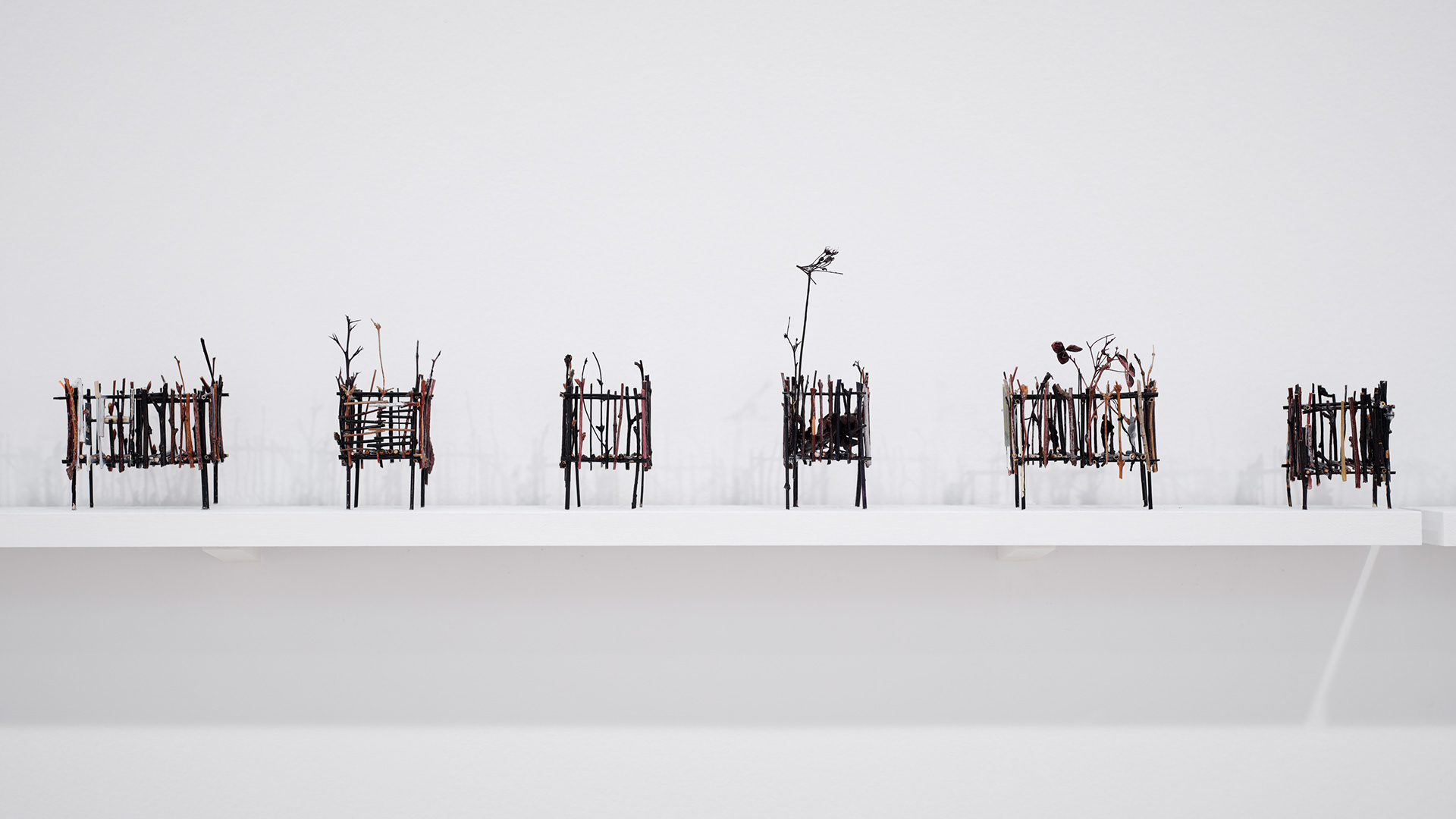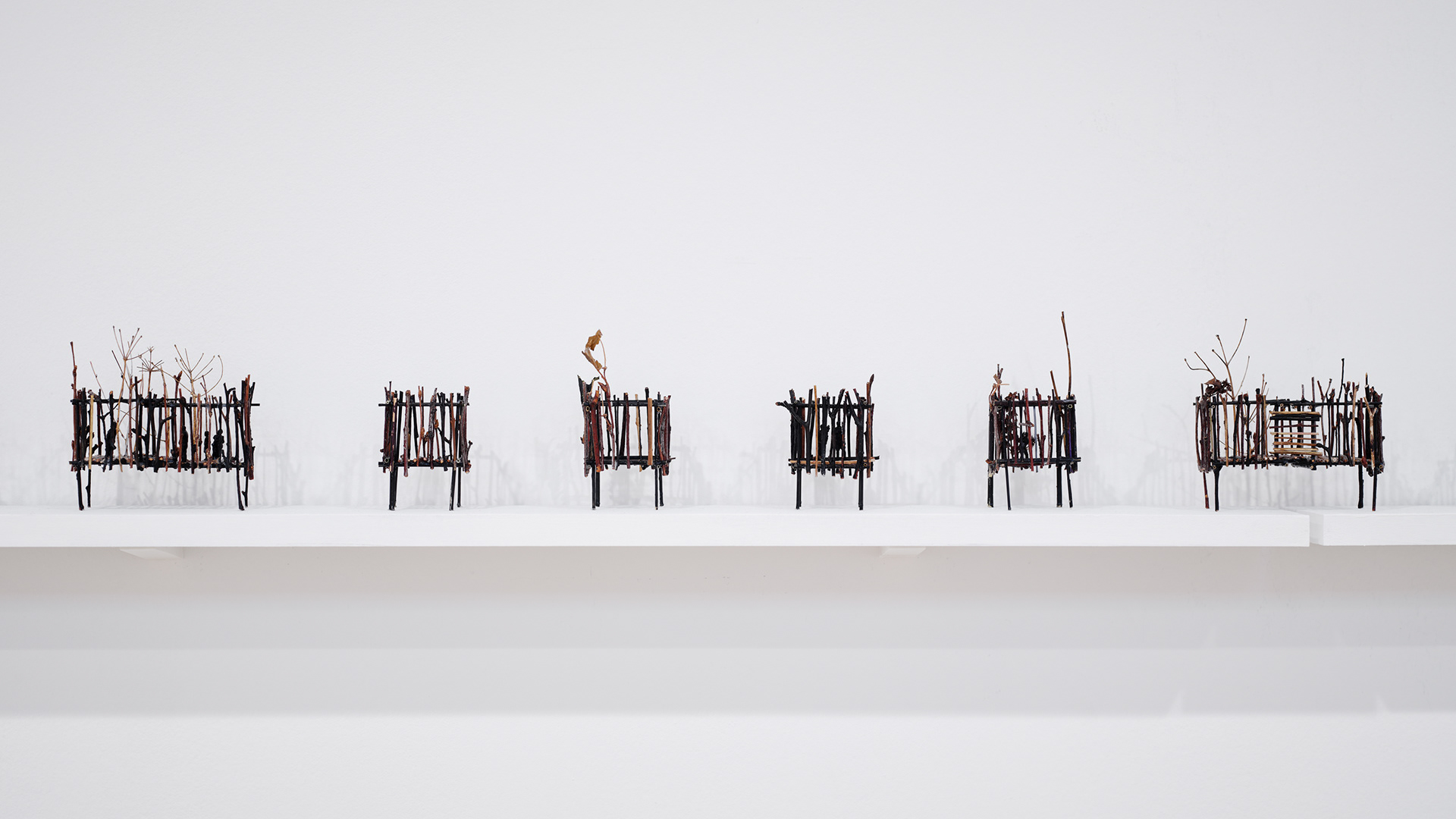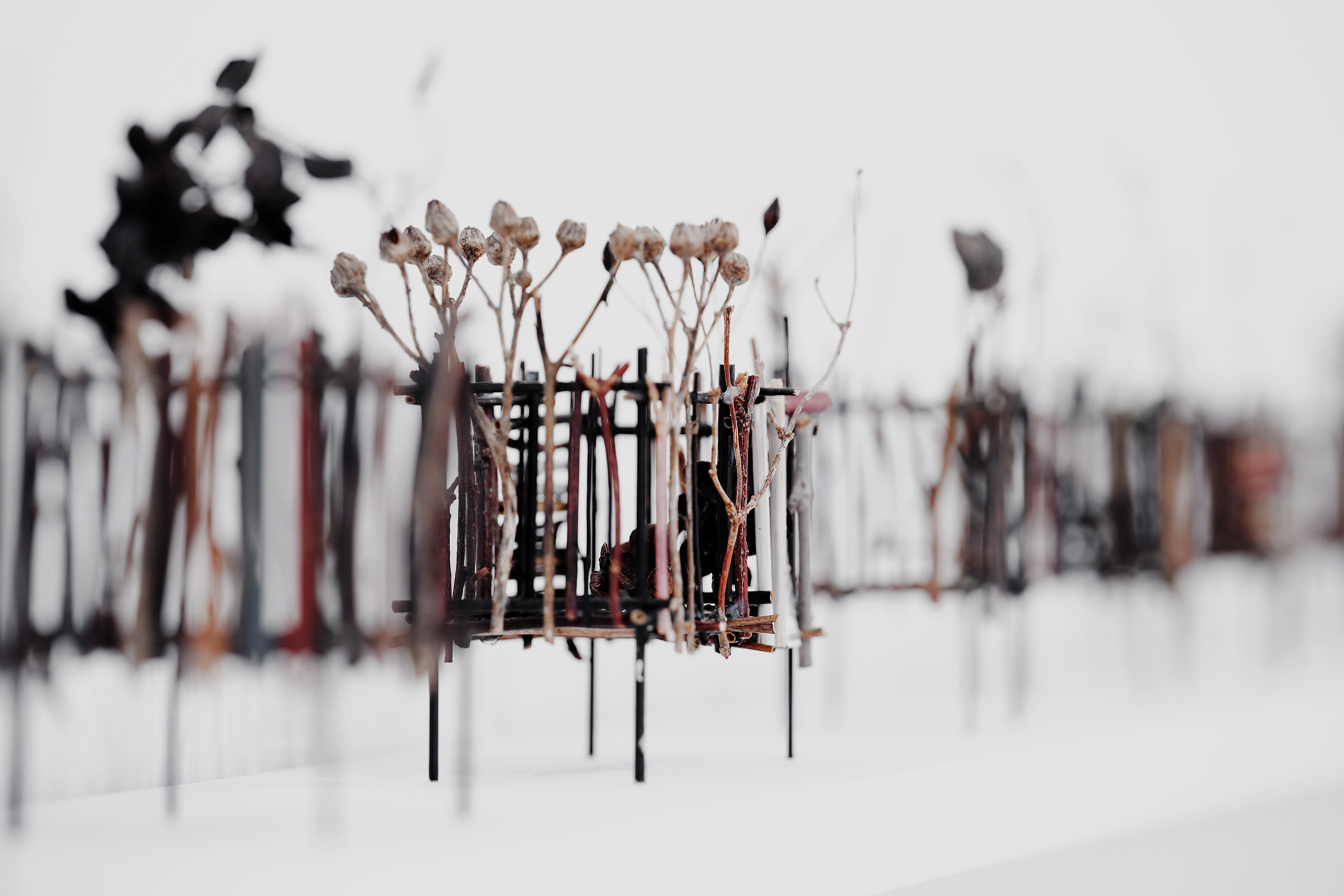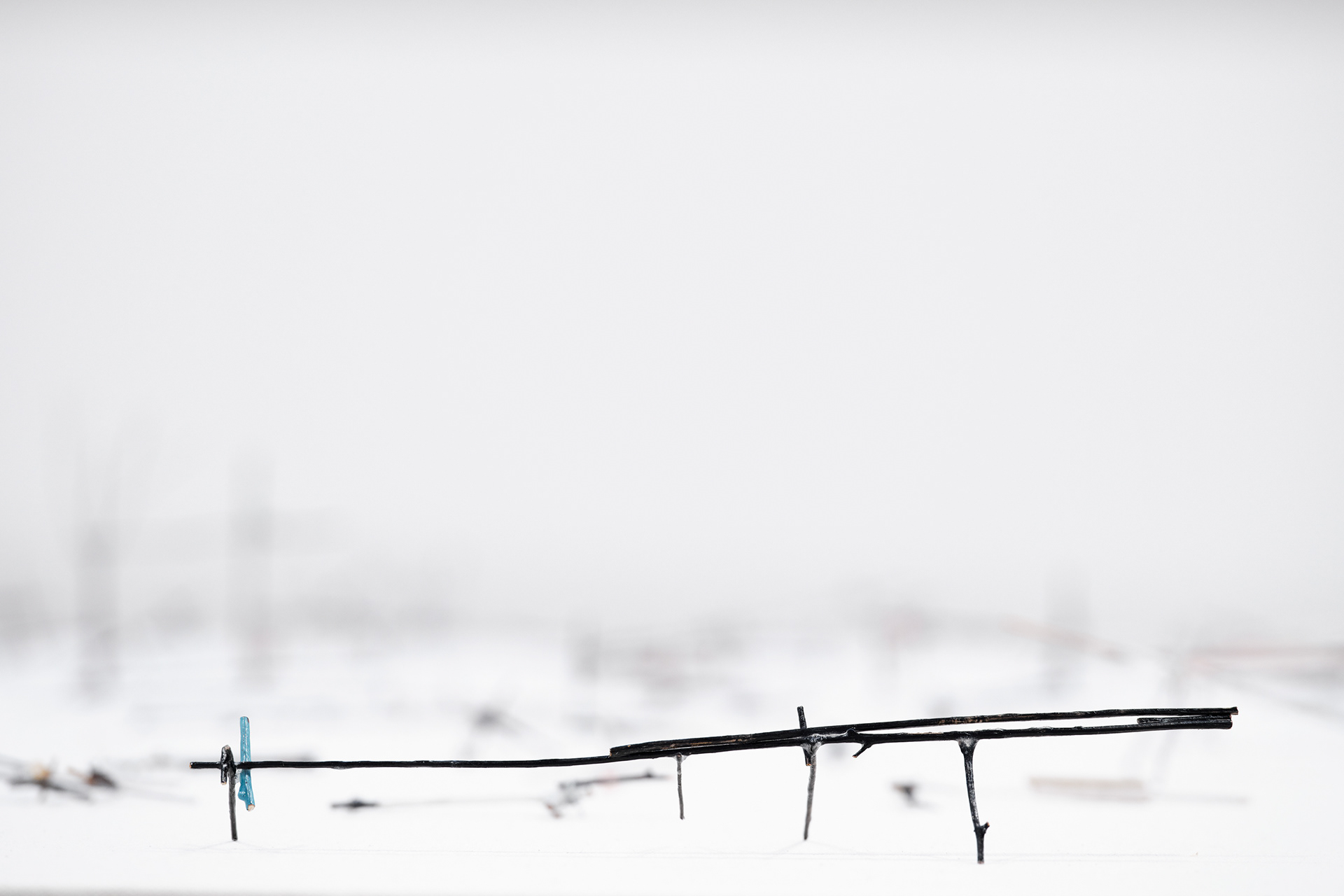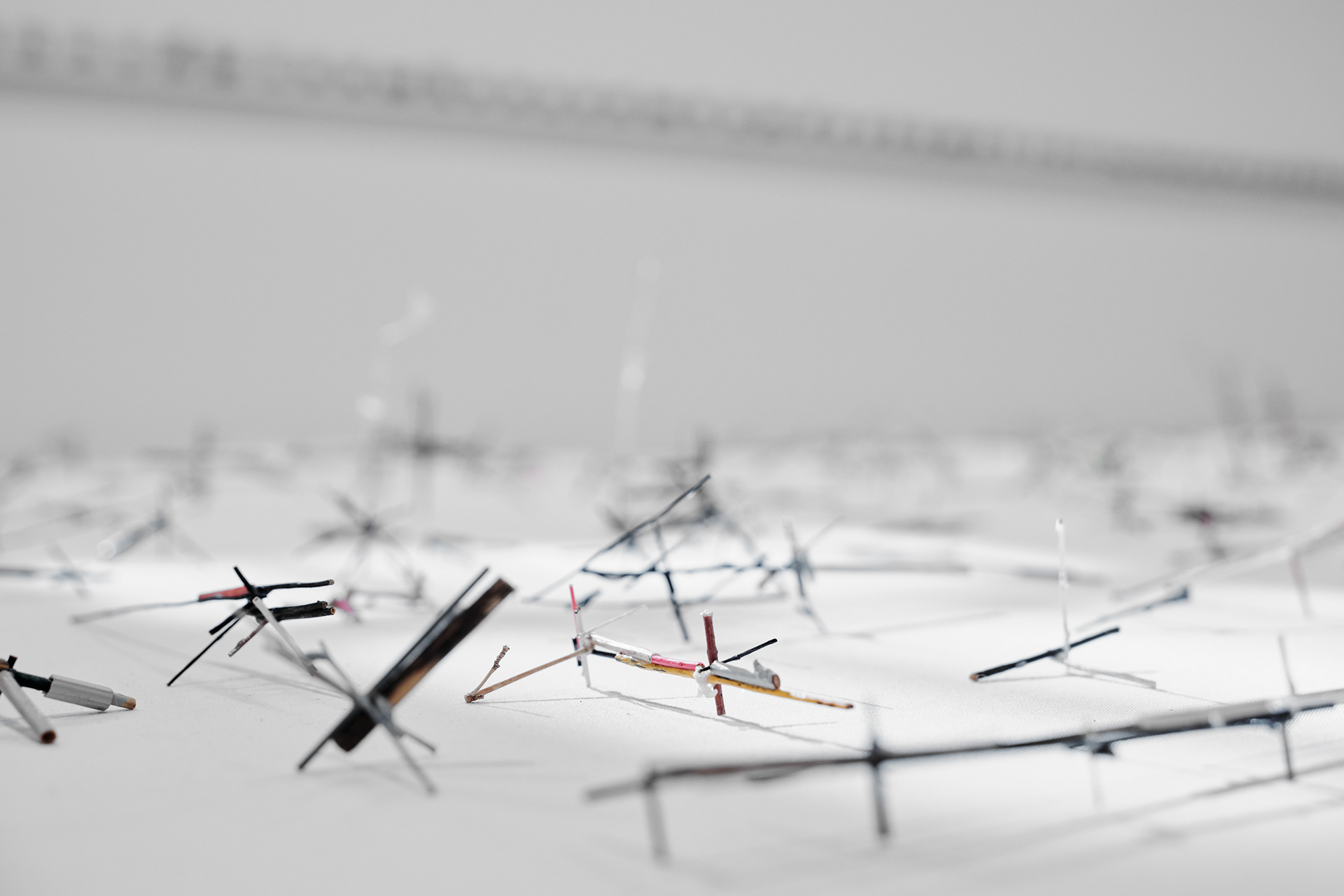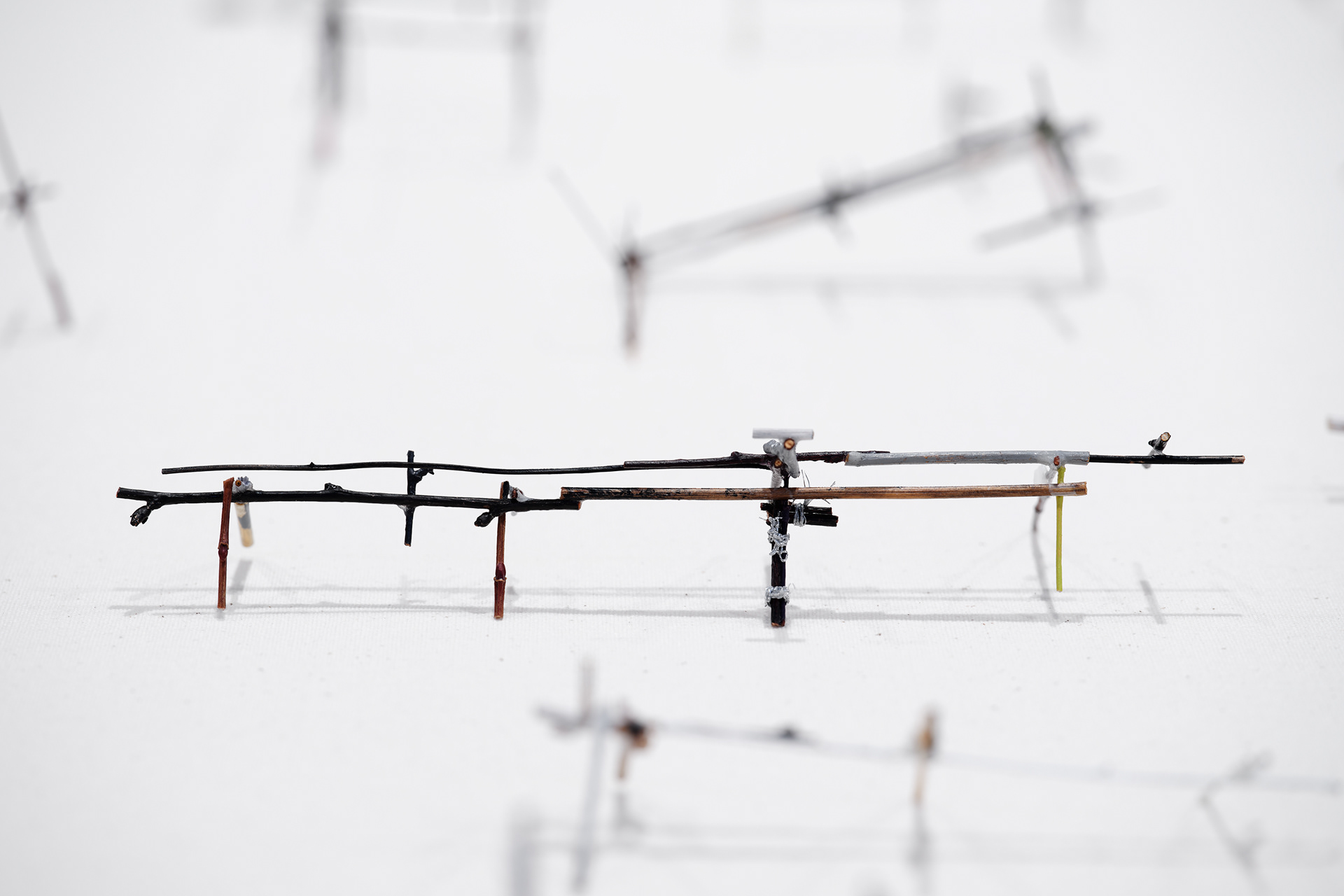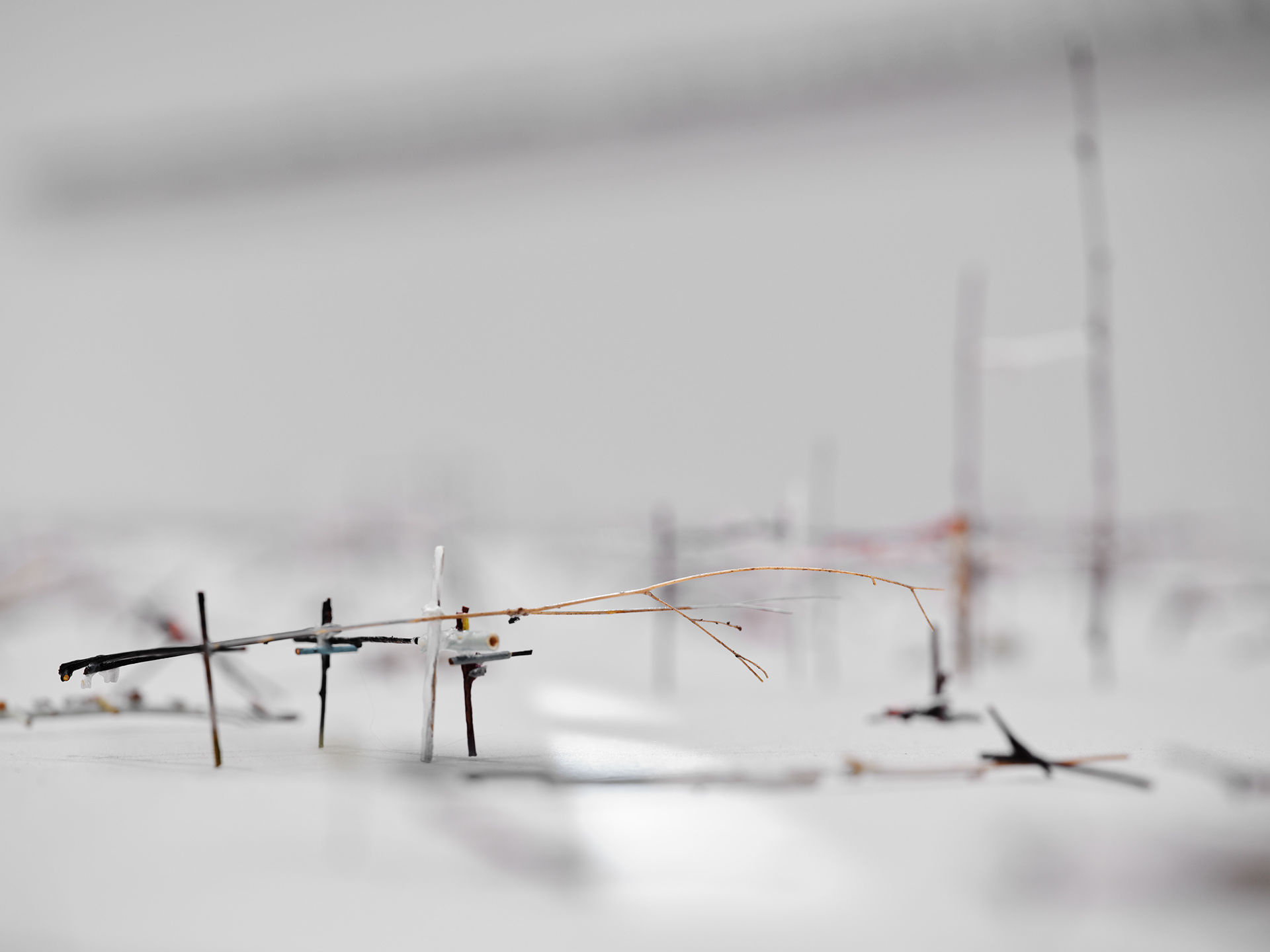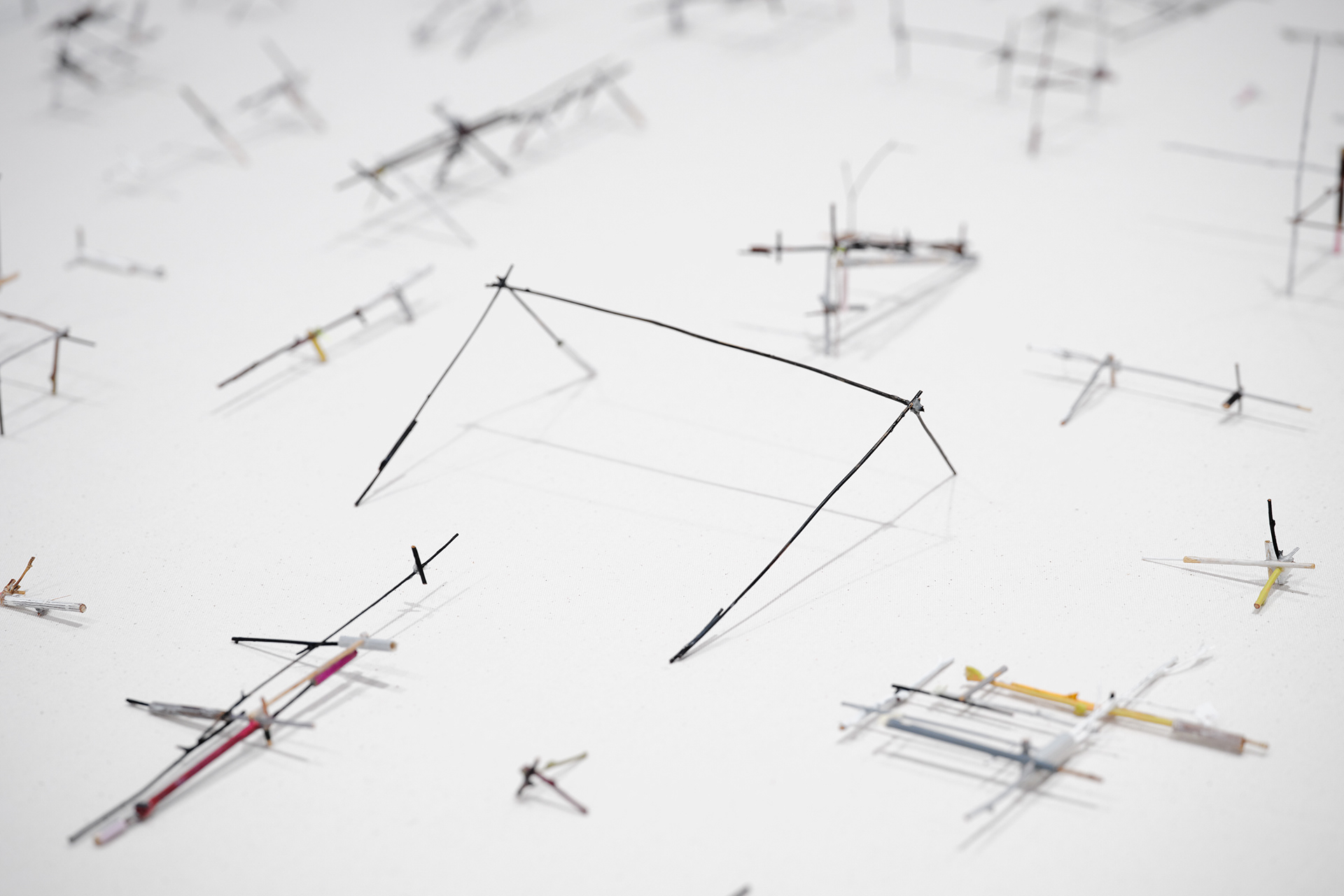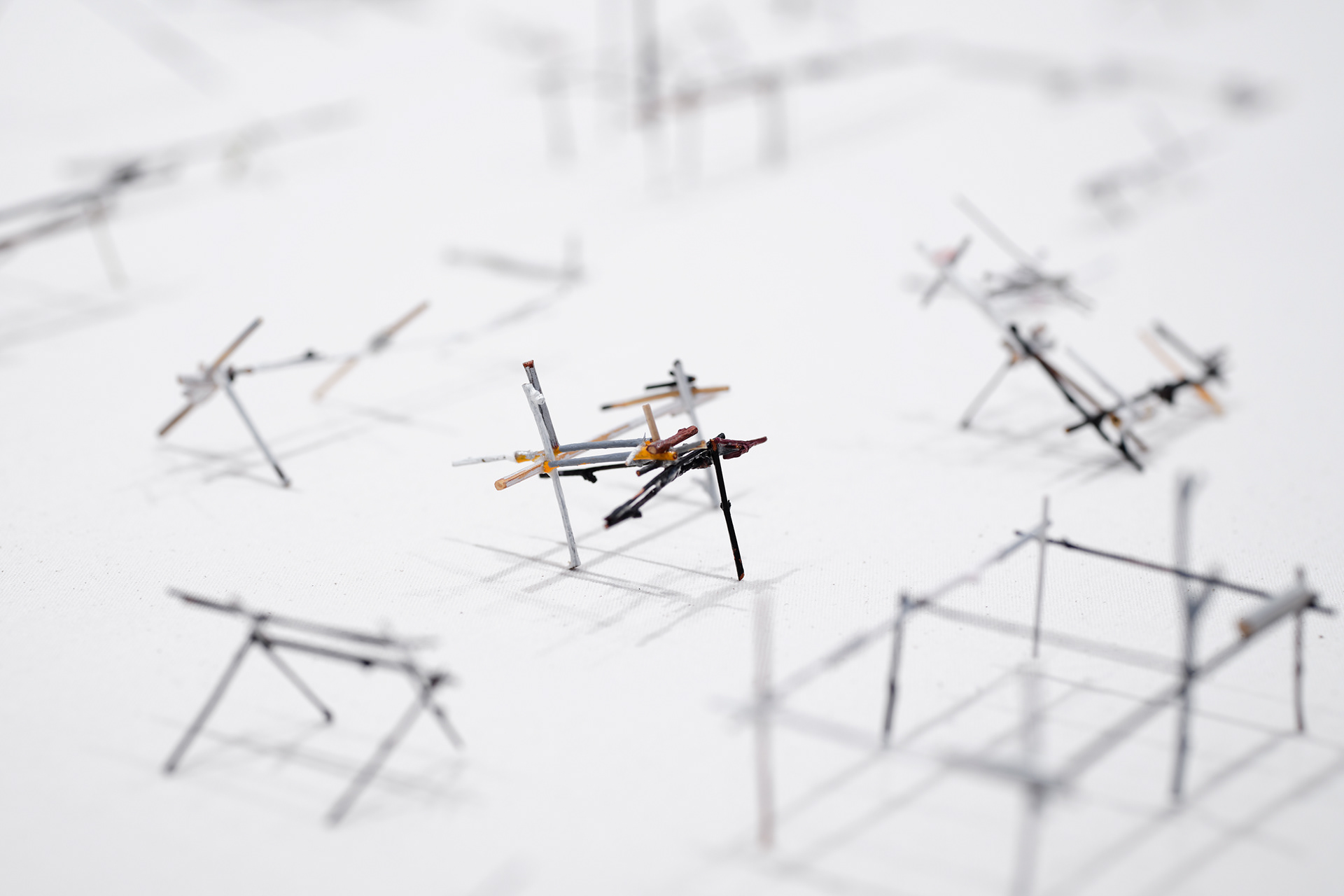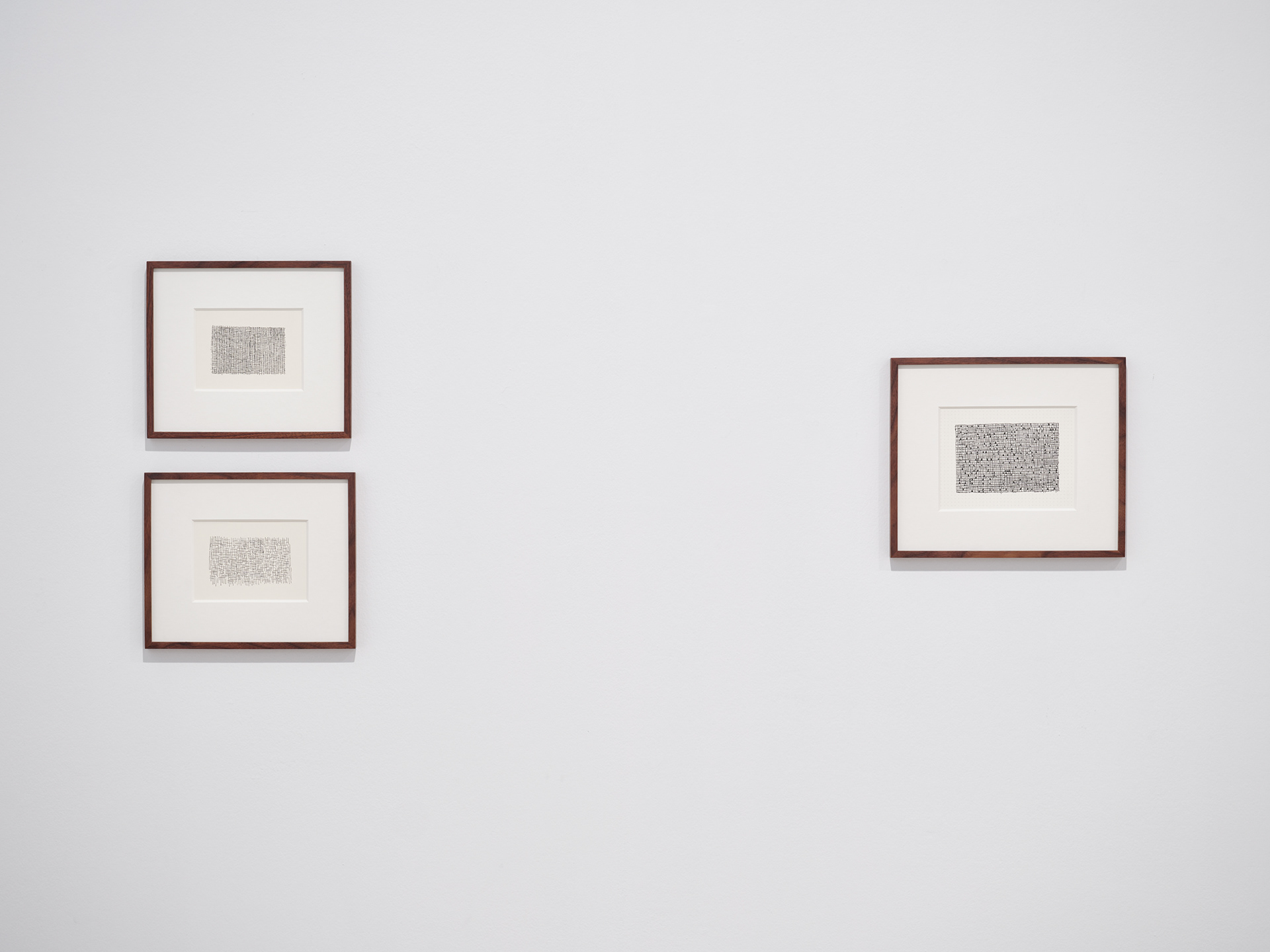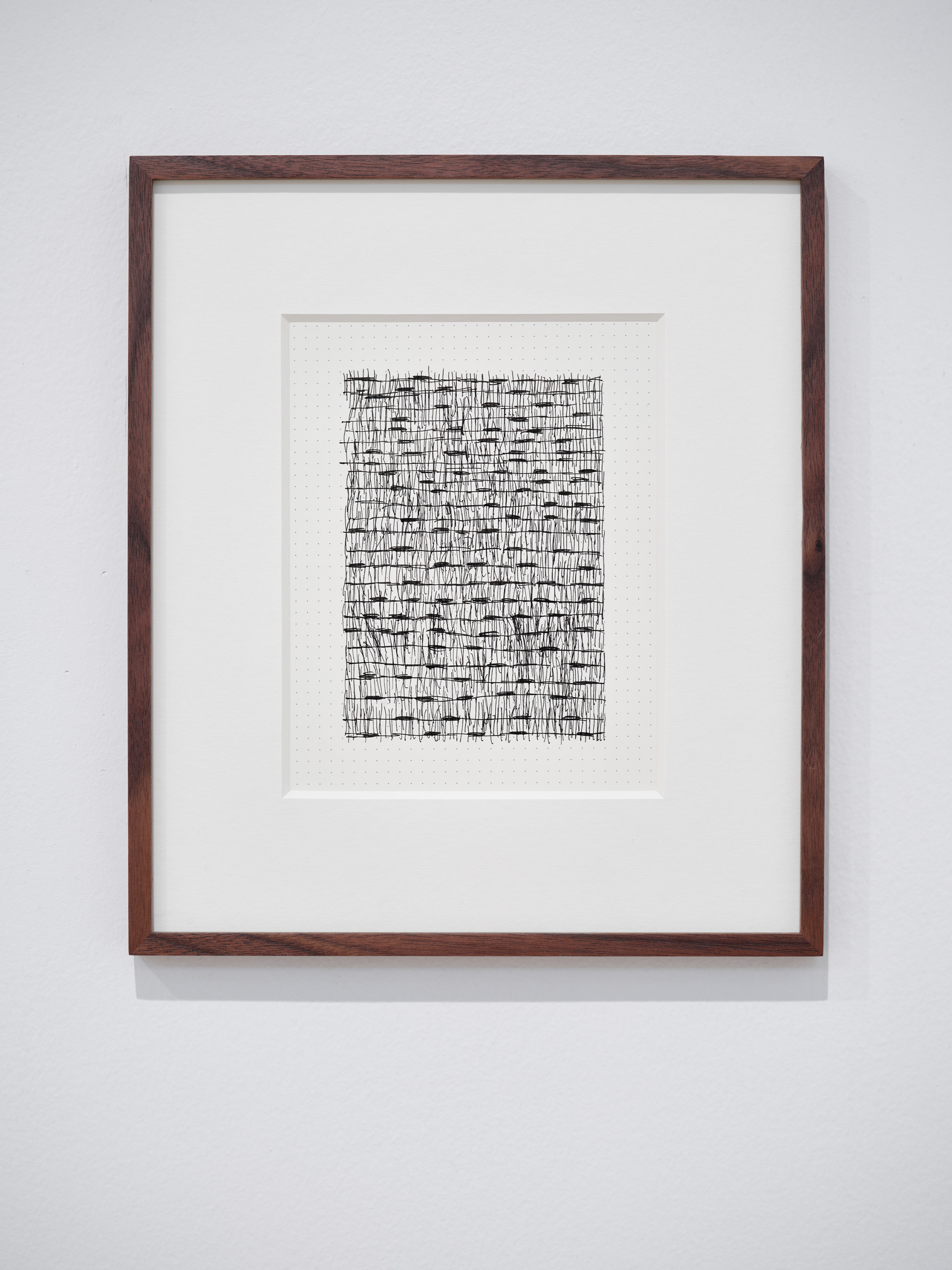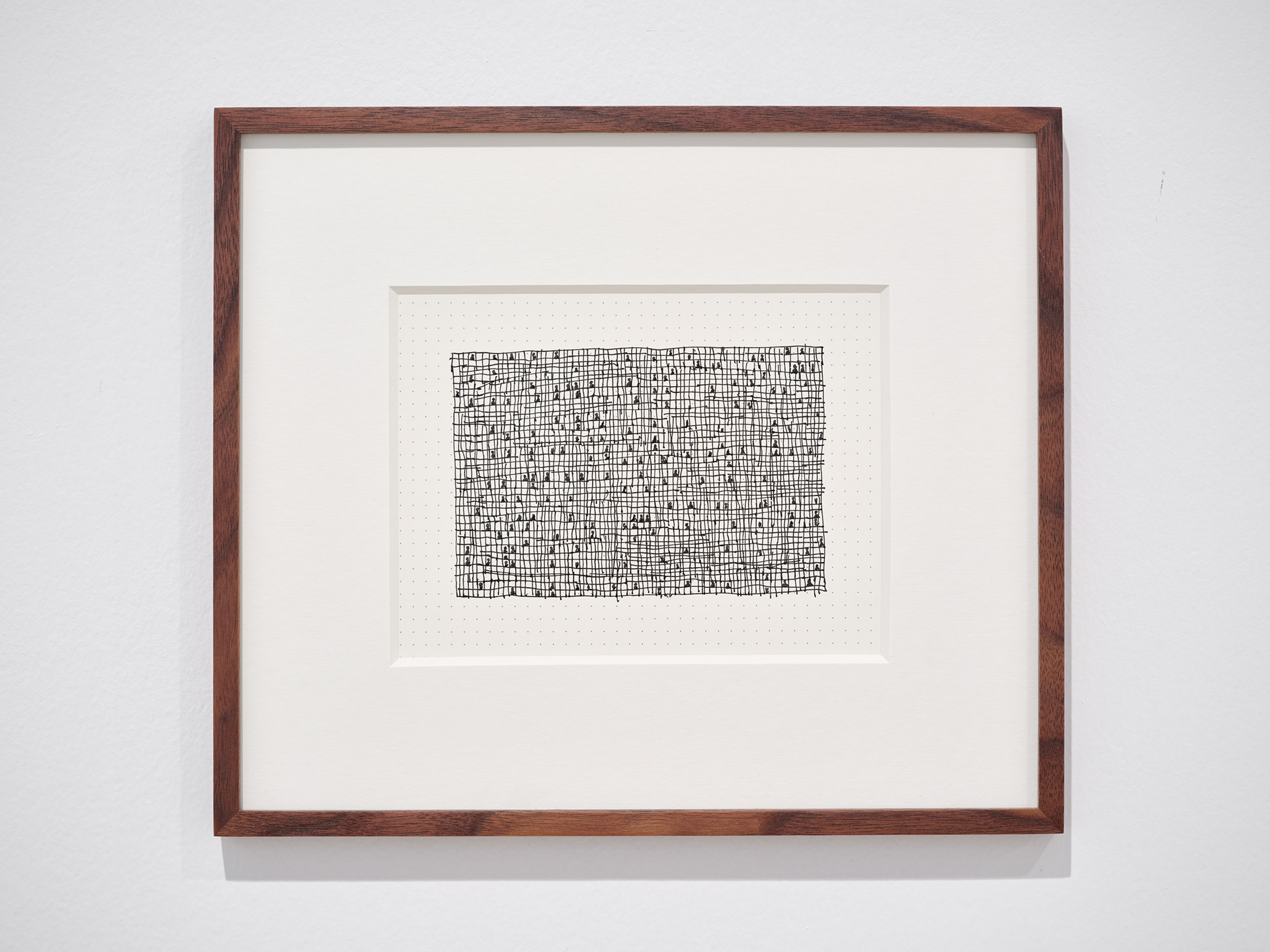TO THE EDGE OF YOUR WORLD | Centre Culturel Irlandais, Paris, France, 2023 Photography and video by Ros Kavanagh
To the Edge of Your World asks what it means to be human today. The works in the installation painstakingly transform discarded materials such as twigs, twine, and cardboard into delicate sculptural metaphors for the interconnectedness of individual experience and world events. Broken and discarded bits of trees and twigs have been cut from their support system. In Groener’s work, Twine embodies an innate desire to physically, emotionally, and metaphorically repair and bridge distances. Repetition serves to revisit something already done or said relentlessly. Suffused by an audio environment of song combined with fragments of sounds from nature and everyday street life, the exhibition evokes patterns of displacement and the fragility of existence, as well as probing both the psychological effects of human tragedy and the resilience that may result. “It is a questioning of perception and a longing to get closer to an understanding of human conscience,” says the artist.
In 2022, Groener travelled across the American South, visiting historic sites important to the Civil Rights Movement. She made this journey in the company of John Relman, one of the country’s most prominent civil rights lawyers of recent years. With Relman as her guide, the artist visited Civil Rights museums, trails, and memorials in Jackson, Mississippi; Memphis, Tennessee; and Selma and Montgomery, Alabama. America’s historical, contemporary, and systemic injustices starkly made tangible on this road trip have profoundly informed Groener’s new works.
The artist observes that, like civil rights, human rights are endorsed in most countries but never guaranteed. The escalating number of people in the world forced to flee their homes due to violence, climate change, or oppressive political systems continues to mount into what Groener sees as a global existential crisis: “Bearing our past, every second of our lives is lived looking forward. We construct our narratives through time and place. We witness personal and global conflicts and crises that lay bare the vulnerability of life. We continue to live in the hope of a better future.”
